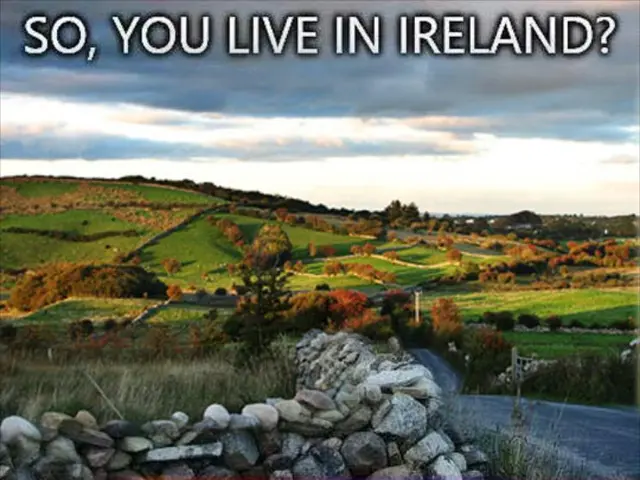Catastrophic natural disasters, including floods and bushfires, along with increasing sea levels pose a $600 billion threat to Australian properties, potentially affecting millions of residents by 2050.
In a striking revelation, a recent National Climate Risk Assessment has highlighted potential financial losses for the Australian property market. By 2050, an estimated $600 billion could be wiped from Australia's property values, with more than 1.5 million Australians directly in harm's way due to rising sea levels, bushfires, floods, and storms.
The assessment, conducted by the government, has categorised a number of suburbs as high-risk, including several in the electorate of Wentworth, represented by Federal MP Allegra Spender. Suburbs like Darlinghurst, Double Bay, and Darling Point are particularly vulnerable to rising sea levels, while some suburbs in the Adelaide Hills, renowned for their extreme bushfire risk, have seen nearly every home experience strong price growth.
Despite the risks, housing prices continue to rise in high-risk areas. Suburbs like Stirling, Heathfield, Crafers West, and Aldgate in South Australia have posted annual gains of up to 12.5%, with median prices exceeding $1.3 million. Byron Bay in New South Wales' northeastern corner has also seen prices rise, bucking the trend of some bushfire and flood-prone communities where values have fallen.
The top 10 local government areas for seller profits in the June quarter included Kiama, Byron Shire, Cottesloe, Surf Coast, and several Sydney councils such as Waverley, Northern Beaches, and Woollahra. However, up to 42% of high-risk suburbs recorded price declines, particularly in lower-value coastal towns and some prestige markets.
Experts warn that the real tipping point may come when banks, regulators, and governments tighten their response, through tougher building codes, lending restrictions, or more frequent extreme weather events. Already, in some regions, insurers have pulled out entirely, leaving homeowners with properties that are uninsurable, unfinanceable, and difficult to sell.
Yet, the financial pressure and risks do not seem to deter many Australian buyers. Lifestyle and premium amenities continue to outweigh the long-term dangers of climate exposure for many, with demand remaining strong in high-risk areas in Queensland and Victoria. Towns such as Hollands Landing, Manangatang, and Shepparton in Victoria, and Palmers Island, Crangan Bay, East Wardell, Seahampton, and Bucketty in New South Wales, continue to attract buyers despite their climate vulnerabilities.
As the reality of climate change becomes more apparent, the need for strong action to create a safer future for all Australians has been emphasized. MP Spender has voiced her concern over the report's findings, calling for action to ensure a safer future for her constituents and all Australians.
The assessment does not contain specific information about regions where governments have tightened building laws or credit regulations to protect residential properties at high risk of climate disasters. As the situation evolves, it will be interesting to see how governments, banks, and homeowners respond to the growing challenge of climate risks and property values.
Read also:
- Federal petition from CEI seeking federal intervention against state climate disclosure laws, alleging these laws negatively impact interstate commerce and surpass constitutional boundaries.
- President von der Leyen's address at the Fourth Renewable Hydrogen Summit, delivered remotely
- Unveiling Innovation in Propulsion: A Deep Dive into the Advantages and Obstacles of Magnetic Engines
- Intensified farm machinery emissions posing challenges to China's net-zero targets








